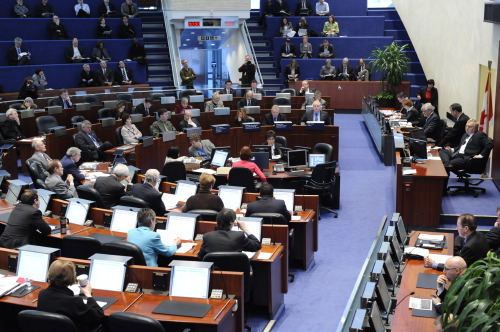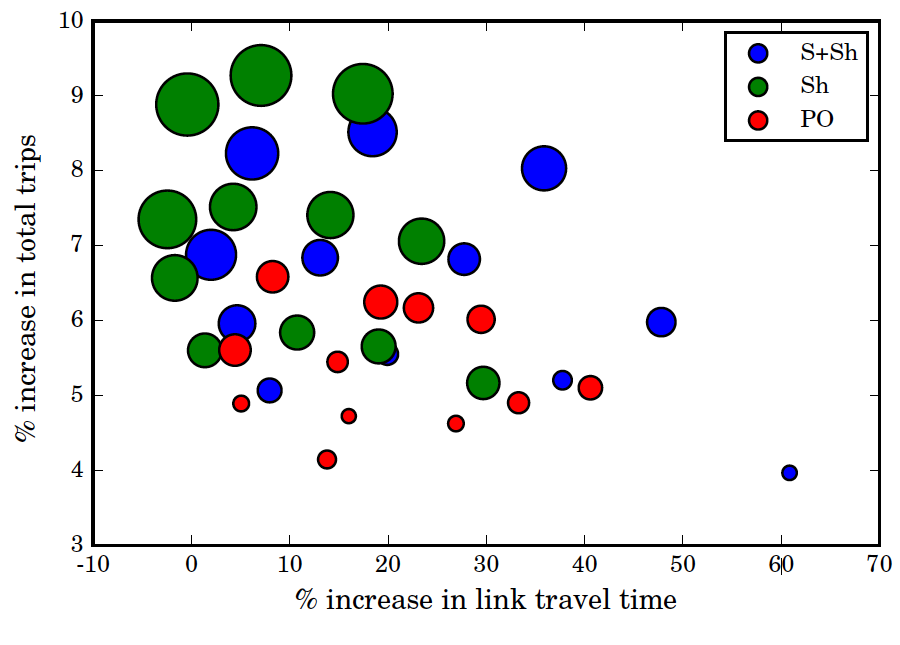Autonomous Vehicles and Cities
Governing Autonomous Vehicles
The advent of autonomous-vehicle (AV) technology promises to upend urban mobility and transportation policy. Yet this technology, as well as its possible social and environmental consequences, are far from certain. At JTL, we examine how people, policy, and cityscapes will interact with this new technology by examining the formation processes of people’s preferences for autonomous vehicles; evaluating how to embed shared AV services within the public transportation system, through the integration of information, price, operations, and institutions; envisioning how municipal governments can devise AV policies to produce more equitable, sustainable, efficient, and livable cities; examining potential secondary impacts of AVs on urban systems, including land use and the environment as well as policies to mitigate negative impacts; and acknowledging the uncertainties inherent in planning for autonomous vehicles and applying research methodologies appropriate to such uncertainty.
AV technology could revolutionize urban mobility—making travel cheaper and more accessible, and spurring the development of more vibrant, safer communities. These outcomes, however, are hardly guaranteed. Rather, they will require thoughtful regulatory policy to stimulate development in such a positive direction. We provide policymakers in Canada, the United States, Singapore, and other partner organizations with the tools they need to design and implement just such effective, considered legislation.
Approach
Based in the Massachusetts Institute of Technology (MIT) we approach autonomous vehicle development through an urbanist perspective and have five guiding principles:
- AV development should accommodate the different needs, preferences, and abilities of a community’s diverse population.
- AV service should be available and accessible to all citizens, regardless of their income; where they live, work, and play; or the technology they own.
- AVs should contribute to a reduction in transportation-sector greenhouse gas emissions.
- AV rollout should help eliminate fatal and serious traffic collisions.
- AV should be to make walking, biking, public transit, and sharing a ride more attractive.
Our Policy Foundation
We have identified nine general policies to address the challenges of modern transportation systems, which are enhanced by the capabilities of autonomous technology. While these broad ideas must be refined for each local context, they form the backbone of our work.

I. Altering the Cityscape
Limit parking provision: As the AV fleet grows, cities can reduce on-street and garage parking, decouple development projects from parking provision, and incentivize redevelopment of existing lots—to encourage commuters to choose alternative modes of travel.
Rethink the use of streetspace: By reducing road space for automobiles proportional to the decline in registered vehicles, cities can open up land for larger sidewalks and plazas, as well as dedicated transit and bike lanes—to make it more attractive to choose active and public transit.
II. Ensuring Adequate Service
Centralize data collection and distribution: To strengthen and develop a holistic mobility system, cities can use existing technology (such as online trip planning applications and fare collection systems) to make multi-modal travel easier.
Require minimum levels of service provision: By setting minimum levels of service provision, cities can ensure all citizens can get around within a reasonable amount of time, regardless of where they are going or coming from.
Integrate for-hire autonomous vehicles and public transit: Enabling travellers to seamlessly transfer between public transit and for-hire services depending on travel time of day and location makes it more appealing to choose more efficient forms of transport.
III. Harnessing Pricing
Enact distance-based road pricing: Charging users based on when and where they travel would encourage higher vehicle occupancy, particularly at peak times, and would discourage the circulation of empty autonomous vehicles on public streets.
Offer income-based subsidies: Travel is essential to citizen wellbeing, and cities can financially support those of lesser means to meet their travel needs. This assistance should not be a subsidy for AV services specifically, but for using a multi-modal network when getting around.
IV. Limiting Externalities
Require zero-emission vehicles: Vehicles are to a great degree responsible for localized poor air quality, so limiting pollutants at the tail pipe cuts the environmental and health burdens imposed by a fossil fuel-based transportation system.
Limit empty-vehicle travel: Autonomous vehicles will have the ability to move by themselves, without passengers. In congested areas, this could add to traffic and slow travel times for people inside other vehicles. Cities can mitigate this impact by limiting empty-vehicle travel.
AV Policy
| Aptitudes for Regulating Autonomous Vehicles: A Survey of Municipal Officials, , Transportation Research Board 99th Annual Meeting, Washington, D.C., (2020) |
Local governments play an important role in urban transportation through street management, zoning, right-of-way apportionment, and shared jurisdiction over ride-hailing, transit, and road pricing. While cities can harness these powers to steer the development of new transportation technologies, there is little research about what local officials think about making autonomous vehicle (AV)-related policy changes. We compile key AV-related transportation policies and conduct a large survey of... |
|
| Policies for autonomy: How American cities envision regulating automated vehicles, , Urban Science, (2020) |
Local governments play an important role in structuring urban transportation through street design, zoning, and shared jurisdiction over ride-hailing, transit, and road pricing. While cities can harness these powers to steer planning outcomes, there is little research about what local officials think about regulatory changes related to autonomous vehicles (AV). We compile key AV-related policies recommended by scholars but rarely implemented, and conduct a survey of municipal officials... |
|
| Is There a Way? Is There a Will? Legal, bureaucratic and political aspects of Automated Vehicles Regulation in Toronto, Canada, , Transportation Research Board 98th Annual Meeting, Washington, D.C., (2019) |
Current research suggests there is a huge uncertainty as to whether automated vehicle development will improve or exacerbate congestion, sprawl, and inequitable access to travel. Likely, the outcome will be determined by the policies governments adopt to guide development. As such, the goal of this paper is to examine the legal capacity, bureaucratic willingness and capacity, and political willingness and capacity of regulating automated vehicle regulatory development in Toronto, Canada.... |
|
 |
Are cities prepared for autonomous vehicles? Planning for technological change by U.S. local governments, , Journal of the American Planning Association, (2019) |
Problem, Research Strategy, and Findings: Local government policies could impact how autonomous vehicle (AV) technology is deployed. This paper examines how municipalities are planning for AVs, identifies local characteristics that are associated with preparation, and describes what impacts bureaucrats expect from the vehicles. We review existing plans of the United States’ 25 largest cities and survey transportation and planning officials from 120 cities, representative of all... |
 |
An Urban Agenda for Autonomous Vehicles: Embedding Planning Principles into Technological Deployment, , Transportation Research Board 97th Annual Meeting, Washington, D.C., (2018) |
The deployment of autonomous vehicles (AVs) has spawned a considerable literature on the role of national and state-level governments in regulating components of AV manufacturing, emissions, safety, licensing, and data sharing. These provide insight into how AVs can be integrated into the current transportation system. Yet the potential for local governments to shape their futures through AV policies is underexplored. This paper argues that it is both necessary and feasible for... |
 |
Driving AV Policy? A 300-City Survey of AV Policy Preparedness, , (2018) |
AVs could have significant consequences in terms of the level of vehicle travel on urban streets, the need for parking in neighborhoods, the ease of accessing employment, and the incidence of pollution. Addressing those issues is fundamental to achieving better planning, and cities could play an important role in orienting policies to ensure the best-possible outcomes. All around the world, cities hold the legal mechanisms to intervene in issues related to AVs, such as the design of streets... |
 |
Is There a Way? Is There Even a Will? Exploring the legal capacity, bureaucratic willingness and capacity, and political willingness and capacity of automated vehicle regulatory development in Toronto, Canada, , Working paper, (2018) |
Current research suggests there is a huge uncertainty as to whether automated vehicle development will engender a more equitable, efficient, and sustainable transportation network, or will exacerbate current trends of congestion, sprawl, and inequitable access to travel. Likely, the outcome will be determined by the policies governments adopt to guide development. Some of the most acute challenges of automated vehicle proliferation will be most acutely felt in areas under the purview of... |
 |
The Rules of the (Automated) Road: A Regulatory Proposal for Automated Ridehailing Operations in Toronto, Canada, and Government and Industry Feedback, , Working paper, (2018) |
A number of organizations have proposed general principles for AV development—such that it must be equitable, sustainable, and promote better city-building—but this research attempts to move further by offering concrete rules in municipal codes automated vehicle ridehailing companies must follow in order to operate in Toronto, Ontario. As the City of Toronto oversees rideshare company operations, they are legally able to adopt regulations that reflect their general planning principles.... |
AV Analytics
 |
Transit-Oriented Autonomous Vehicle Operation with Integrated Demand-Supply Interaction, , Transportation Research Part C, (2018) |
Autonomous vehicles (AVs) represent potentially disruptive and innovative changes to public transportation (PT) systems. However, the exact interplay between AV and PT is understudied in existing research. This paper proposes a systematic approach to the design, simulation, and evaluation of integrated autonomous vehicle and public transportation (AV+PT) systems. Two features distinguish this research from the state of the art in the literature: the first is the transit-oriented AV operation... |
 |
Integrating Shared Autonomous Vehicle in Public Transportation System: A Supply-Side Simulation of the First-Mile Service in Singapore, , Transportation Research Part A, (2018) |
This paper proposes and simulates an integrated autonomous vehicle (AV) and public transportation (PT) system. After discussing the attributes of and the interaction among the prospective stakeholders in the system, we identify opportunities for synergy between AVs and the PT system based on Singapore’s organizational structure and demand characteristics. Envisioning an integrated system in the context of the first-mile problem during morning peak hours, we propose to preserve high demand... |
| Latent Attitudes of Existing Travel Modes on Autonomous Vehicle Adoption, , Transportation Research Board 99th Annual Meeting, Washington, D.C., (2020) |
With the quick advance of autonomous vehicle (AV) technology, understanding the potential demand of AV and its user characteristics has increasingly become a popular area of research. In consumer choice and technology adoption literature, whenever the demand of a new product is forecasted, the attitudes towards existing choices are found important in addition to new product attributes and consumer characteristics. While there is an abundance of literature from stated preference (SP) surveys... |
|
| Built Environment and Autonomous Vehicles Mode Choice: A First Mile Scenario in Singapore, , Transportation Research Board 98th Annual Meeting, Washington, D.C., (2019) |
This study investigates travel mode choice with on-demand autonomous vehicle (AV). It takes Singapore as the study area and specifically focuses on understanding the impacts of built environment (BE) on first-mile scenarios. A dynamic stated preference survey is developed to automatically generate first-mile travel scenarios based on the respondent’s dwelling location and real-world traffic information. Two mixed logit models with panel data structures are adopted to explore the impacts of... |
|
 |
Rebalancing Shared Mobility-on-Demand Systems: a Reinforcement Learning Approach, , IEEE ITSC Workshop on Intelligent Public Transport 2017, (2017) |
Shared mobility-on-demand systems have very promising prospects in making urban transportation efficient and affordable. However, due to operational challenges among others, many mobility applications still remain niche products. This paper addresses rebalancing needs that are critical for effective fleet management in order to offset the inevitable imbalance of vehicle supply and travel demand. Specifically, we propose a reinforcement learning approach which adopts a deep Q network... |
 |
Simulating the First Mile Service to Access Train Stations by Shared Autonomous Vehicle, , Transportation Research Board 96th Annual Meeting, (2017) |
This paper studies the potential impacts of autonomous vehicle (AV) sharing with mobility-on demand service on the public transit system. We analyze the current travel demand in the public transit system in Singapore with a special focus on the first-/last-mile problem during morning peak hours. The first-/last-mile in this paper is defined as the gap between origin/destination and the heavy rail stations. A feasible method to integrate AV sharing in current transit system is proposed, which... |
| Competition between Shared Autonomous Vehicles and Public Transit: A Case Study in Singapore, , Transportation Research Part C, (2021) |
Emerging autonomous vehicles (AV) can either supplement the public transportation (PT) system or compete with it. This study examines the competitive perspective where both AV and PT operators are profit-oriented with dynamic adjustable supply strategies under five regulatory structures regarding whether the AV operator is allowed to change the fleet size and whether the PT operator is allowed to adjust headway. Four out of the five scenarios are constrained competition while the other one... |
|
| Impacts of subjective evaluations and inertia from use of existing travel modes on adoption of autonomous mobility-on-demand, , Transportation Research Part C, (2021) |
As autonomous vehicle (AV) technology advances, it is important to understand its potential demand and user characteristics. Literature from stated preference surveys find that attitudes and current travel behavior are as or more important than demographics in determining intention to purchase or use AVs. Yet to date no study has looked at how attitudes and use of existing modes both simultaneously affect AV adoption. In this study, we conduct a stated preference survey in Singapore to... |
|
|
|
Value of Demand Information in Autonomous Mobility-on-Demand Systems, , Transportation Research Part A, (2019) |
Effective management of demand information is a critical factor in the successful operation of autonomous mobility-on-demand (AMoD) systems. This paper classifies, measures and evaluates the demand information for an AMoD system. First, the paper studies demand information at both individual and aggregate levels and measures two critical attributes: dynamism and granularity. We identify the trade-offs between both attributes during the data collection and information inference processes and... |
 |
Risk Preference and Adoption of Autonomous Vehicles, , Transportation Research Part A, (2019) |
While there is an increasingly large body of research on the potential demand for autonomous vehicles (AV), an understudied factor is people’s risk preference. Risk preference is important because many aspects of AVs are highly uncertain as the technology and its encompassing mobility system emerge and continue to evolve. This study analyzed how risk preferences influence the choice of AVs, and how risk preferences elicited by economic and psychometric methods differ in their impacts. We... |
| Public Perceptions of Autonomous Vehicle Safety: An International Comparison, , Safety Science, (2019) |
Autonomous vehicles (AV) are envisioned to reduce road fatalities by switching control of safety-critical tasks from humans to machines. Realizing safety benefits on the ground depends on technological advancement as well as the scale and rate of AV adoption, which are influenced by public perceptions. Employing multilevel structural equation modeling, this paper explores differences in perceptions of AV safety across 33,958 individuals in 51 countries. At the individual level, young males... |
|
 |
Dynamic Pricing in Shared Mobility on Demand Service and its Social Impacts, , Working paper, (2017) |
We consider a daily-level profit maximization of a shared mobility on-demand (MoD) service with request-level control, and possible government interventions to improve system efficiency. We use discrete choice models to describe traveler behavior, apply the assortment and price optimization framework to model the request-level dynamics, and leverage insights from dynamic programming to develop daily-level optimization problem. We solve this problem by designing parametric rollout... |
TEAM MEMBERS
|
Research Engineer SMART |
PhD 2020 |
MCP/MST 2019 |
MST/MCP 2016 |
|
MST/MCP 2018 |
Postdoctoral Associate |
Assistant Professor at Tongji Univ. |
Postdoctoral Associate |
|
MST 2018 |
Postdoctoral Associate |
PhD 2022 |
MST 2018 |
|
PhD 2018 |
MCP/MST 2020 |
PhD 2022 |
Professor of Cities and Transportation |















